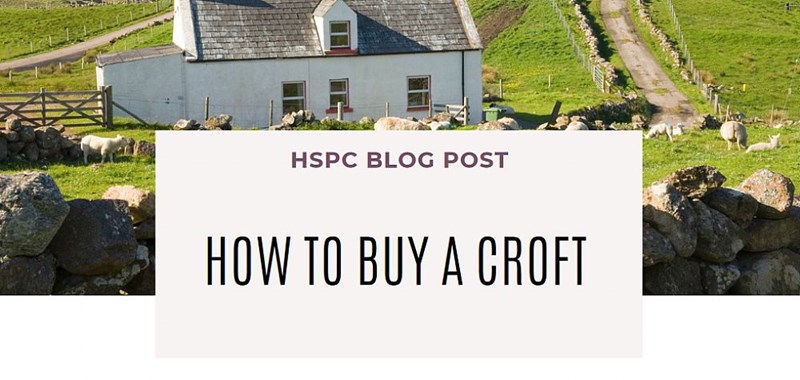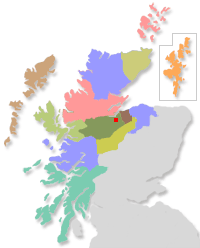
How to buy a Croft
Welcome to this months HSPC blog where we catch up with our solicitor firms to give you valuable information and advice for everything property in the Highlands.
Murray McCheyne from Murchison Law talks us through some of the points to keep in mind when considering a croft purchase in part 1 of our crofting features.
 Having found the croft you want to purchase, the process of buying it involves the creation of a written contract, which starts with an offer from you. When it comes to legal writing most people will seek the assistance of a solicitor or a paralegal, both of whom operate under the umbrella of the regulation of the Law Society of Scotland. It’s important to ensure your chosen lawyer is familiar with buying crofts or has access to someone who is.
Having found the croft you want to purchase, the process of buying it involves the creation of a written contract, which starts with an offer from you. When it comes to legal writing most people will seek the assistance of a solicitor or a paralegal, both of whom operate under the umbrella of the regulation of the Law Society of Scotland. It’s important to ensure your chosen lawyer is familiar with buying crofts or has access to someone who is.
With your lawyer by your side, the next important thing to determine is what exactly you are buying.That’s not just a matter of physical extent. The crofting “status” is relevant too; is it an owner occupied croft or a croft tenancy, or something else? The answer to that will determine the process you will follow next. If what you are buying is a croft tenancy, once you have agreed terms with the Seller, before you can consider the croft to be yours the Crofting Commission as regulator will require to approve an application. More information that can be found at www.crofting.scotland.gov.uk.
If you are buying an owner occupied croft, whilst you do not require the same “prior approval ” of the Crofting Commission, as soon as you become owner you will under the duties common to all crofters, chief among which are that you must be ordinarily resident on, or within 32 kilometres of, the croft; you must not misuse or neglect the croft, and you must cultivate the croft, or put it to another purposeful use.
Around 45% of the total number of all crofts (somewhere around 19,000) are now visible on the Crofting Register, a map based register kept by Registers of Scotland accessible at https://crofts.ros.gov.uk The Crofting Register usually accurately lists if the croft is tenanted or owned. If the croft you want to purchase is already listed on the Crofting Register the process will be that bit simpler. If it isn’t listed your purchase will be a trigger event, meaning the land will require to be added to the Crofting Register by either you or the vendor. Again your solicitor will help you navigate this.
Finally, if there are buildings on the croft, such as a house, it is important to know if they remain in the crofting system. If they have not been removed (by means of a decrofting direction or resumption order) you should aware that at present no main stream lenders offer loans secured against land which forms or is part of a croft. In practice, this most often means your purchase will be self-funded.
As with most successful projects, having good advice makes all the difference. When buying a croft you will want reliable advice from an experienced legal adviser. HSPC can help you identify such a lawyer.
Thinking of owning a croft? Get in touch with HSPC to get you started. We have the largest portfolio of properties in the Highlands.
- Search Form
- Map Search
-
You can draw a search area on a map, or click a location below.

- Recently Added Properties
- New in the Last 3 Days New this Week New this Fortnight Recent Updates All Our Properties
- Special Searches
-
New Build Properties
Property with a Paddock
Commercial Property
- My HSPC
- Property MatchYour Preferences
- Highland Solicitors Property Centre Local knowledge. A world of difference.
- Visit our property centre at 30 Queensgate, Inverness, IV1 1DJ
Company number: SC099700
Registered Office: 30 Queensgate, Inverness, IV1 1DJ - 01463 231173